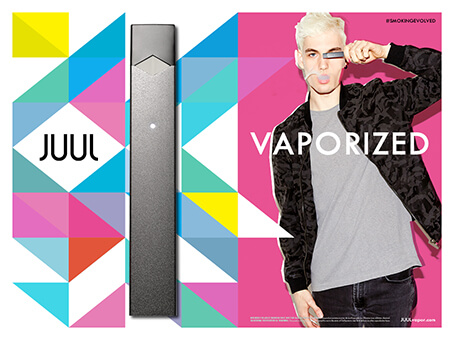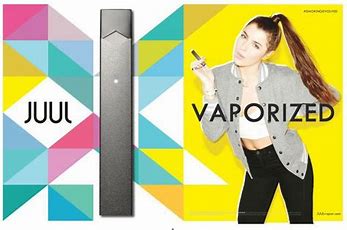Corporate White Male Privilege
Topic: COMMUNITY INTEREST
Corporate White Male Privilege
Silence is golden, or so we were was told when we were young ladies. Later, everything changed. Silence equals prolonged harassment, toxic work environments, and dominant white male privilege in corporate America. Silence is the ocean of the unsaid, the unspeakable, the repressed, the erased, and the unheard. It surrounds the scattered islands made up of those allowed to speak and of what can be said and who listens.
Silence occurs in many ways for many reasons; each of us has their own sea of unspoken words. English is full of overlapping words, in regards to silence as what is imposed, and quiet as what is sought. The tranquility of a quiet place, of quieting one’s own mind, of a retreat from words and bustle is acoustically the same as the silence of intimidation or repression, but psychically and politically something entirely different. What is unsaid because serenity and introspection are sought and what is not said because the threats are high or the barriers are great are as different as swimming is from drowning. Quiet is to noise as silence is to communication. When women are silenced; no one wins. When women do not matter; no one wins.
What is sexual harassment? It takes many forms.ower is at the core, while popular characterizations portray male supervisors harassing female subordinates, other aspects suggest that women in authority may be more frequent targets. Relative to non-supervisors, female supervisors are more likely to report harassing behaviors and to define their experiences as sexual harassment. Sexual harassment can serve as an “equalizer” against women in power, motivated more by control and domination than by sexual desire. This points to social isolation as a mechanism linking harassment to gender non-conformity and women’s authority, particularly in male-dominated work settings.
Sexual harassment is classified as a form of sex discrimination under Title VII of the Civil Rights Act of 1964. The U.S. Equal Employment Opportunity Commission (EEOC) defines it as “unwelcome sexual advances, requests for sexual favors, and other verbal or physical conduct of a sexual nature” that interferes with one’s employment or work performance, or creates a “hostile or offensive work environment” (U.S. EEOC 2011). Due, in part, to varying definitions and indicators, prevalence estimates vary dramatically (Welsh 1999), leading many researchers to adopt a strategy of triangulation that considers multiple forms or measures (e.g., Houston and Hwang 1996; Uggen and Blackstone 2004).
Feminist scholarship situates sexual harassment within broader patterns of discrimination, power, and privilege, linking harassment to sex-based inequality. "Masculinities” in ways that often exclude and cause harm to women as a group, even when this is not intended.
Women are targeted if they challenge their subordinate position in the gender system. Sexual harassment may thus act as a tool to police appropriate ways of “doing gender” in the workplace, and to penalize gender non-conformity.
This type of “contrapower” harassment suggests that gender, race, and class positions imbue harassers with informal power, even when targets possess greater organizational authority than their harassers. Women holding authority positions thus offer an intriguing paradox on sexual harassment. The first, a “vulnerable-victim”, suggests that more vulnerable workers—including women, racial minorities, and those with the most precarious positions and least workplace authority—are subject to greater harassment. The second, the “power-threat” woman, suggests that women who threaten men’s dominance are more frequent targets. These women are most likely to face harassment and discrimination
The idea of “masculine overcompensation”—where men react to threats to their manhood by enacting an extreme form of masculinity also helps explain why men may harass women in power. Women who are “too assertive” threaten the gender hierarchy and are denigrated through harassment. Also, females with greater tenure, independent of age, were more likely to view sexual harassment as a problem for them at work, concluding that the practice is used instrumentally against powerful females who encroach on male territory.
Regardless of their organizational rank, sexual harassment objectifies workers and reduces women to sexual objects in ways that “may trump a woman’s formal organizational power” Women repeatedly speak about feeling isolated, and of harassment by co-workers and subordinates directed toward putting them “in their place.” Still, they tolerated such harassment to keep their jobs. To report the harassment creates even more discomfort. Social isolation may also represent an important mechanism linking expressions of gender and industry sex ratios to harassment, in keeping with our second and third hypotheses. Whether attempting to prove they could lead a team of workers or prove themselves as women in masculine fields, women’s isolation in these positions repeatedly left them vulnerable to harassment. Women are told “this is no place for women,” while men and women who diverged even slightly from rigid gender expectations elicited taunts and more menacing responses.
There is clear evidence on the effects of workplace authority on sexual harassment, with consequential implications of gender and power. In particular, it is found that female supervisors are more, rather than less, likely to be harassed, supporting the notion that interactions between workers are not driven strictly by organizational rank. Instead, co-workers’ relative power is also shaped by gender. When women’s power is viewed as illegitimate or easily undermined, co-workers, clients, and supervisors appear to employ harassment as an “equalizer” against women supervisors, consistent with research showing that harassment is less about sexual desire than control and domination.
While sexual harassment policies are put in place to protect workers, organizational practice is often misaligned with formal policies or grievance procedures, calling into question fundamental assumptions many sociologist make regarding organizational. A worker reported an incident of sexual harassment to a female supervisor that her manager did. It was not until a month later that the workers manager came back to the victim to apologize and admit to the offense. The worker found this odd due to the fact the conversation was not supervised. Turns out, the female supervisor never took the incident to the HR management. She was silenced to ensure her steps up the corporate food chain.
Power in the form of supervisory authority also provokes backlash from clients, subordinates, and fellow supervisors. This paradox of power represents both a challenge and an opportunity for existing frameworks. Beyond gender, characteristics such as race or class may similarly trump formal organizational authority in determining workplace power. While firms are increasingly adopting policies to increase diversity in management.
While legal and organizational responses to sexual harassment have evolved not evolved to keep in pace with changing workplace realities. Many still view the typical harassment scenario as one involving a sleazy male boss and a powerless female secretary. Moving away from such stereotypes is a critical step for improving organizational policies and training procedures on sexual harassment. Effective training must go beyond male boss/female subordinate role-playing exercises and better reflect the diversity of harassment experiences. Effective grievance procedures must also enable targeted workers to come forward without undermining their own authority. For women who become bosses themselves, their positions create a paradox of power in a gender system that continues to subordinate women. In taking on positions of authority, they also take on a greater risk of sexual harassment.
The quiet of the listener makes room for the speech of others, like the quiet of the reader taking in words on the page, like the white of the paper taking ink. When we women offer our experience as our truth, as human truth, all the maps change. There are new mountains. The new voices that are undersea volcanoes erupt in what was mistaken for open water, and new islands are born; it’s a furious business and a startling one. The world changes. Silence is what allows people to suffer without recourse, what allows hypocrisies and lies to grow and flourish, crimes to go unpunished. If our voices are essential aspects of our humanity, to be rendered voiceless is to be dehumanized or excluded from one’s humanity. And the history of silence is central to women’s history.
Words bring us together, and silence separates us, leaves us bereft of the help or solidarity or just communion that speech can solicit or elicit. Some species of trees spread root systems underground that interconnect the individual trunks and weave the individual trees into a more stable whole that can’t so easily be blown down in the wind. Stories and conversations are like those roots.
Being unable to tell your story is a living death, and sometimes a literal one. If no one listens when you say your ex-husband is trying to kill you, if no one believes you when you say you are in pain, if no one hears you when you say help, if you don’t dare say help, if you have been trained not to bother people by saying help. If you are considered to be out of line when you speak up in a meeting, are not admitted into an institution of power, are subject to irrelevant criticism whose subtext is that women should not be here or heard.
Violence against women is often against our voices and our stories. It is a refusal of our voices, and of what a voice means: the right to self-determination, to participation, to consent or dissent; to live and participate, to interpret and narrate.
A husband hits his wife to silence her. A date rapist or acquaintance rapist refuses to let the “no” of his victim mean what it should, that she alone has jurisdiction over her body. Rape culture asserts that women’s testimony is worthless, untrustworthy. Anti-abortion activists also seek to silence the self-determination of women. A murderer silences forever. A corporate executive silences a female subordinate by threatening her job and creating a hostile environment for her.These are assertions that the victim/woman has no rights, no value – is not an equal.
Other silencings take place in smaller ways: the people harassed and badgered into silence online, talked over and cut out in conversation, belittled, humiliated, dismissed.
Having a voice is crucial. It’s not all there is to human rights, but it’s central to them, and so you can consider the history of women’s rights and lack of rights as a history of silence and breaking silence. Speech, words, voices sometimes change things in themselves when they bring about inclusion, recognition: the rehumanization that undoes dehumanization. Sometimes they are only the preconditions to changing rules, laws, regimes to bring about justice and liberty.
Just being able to speak, to be heard, to be believed, are crucial parts of membership in a family, a community, a society, a corporation. Sometimes our voices break those things apart.
And then when words break through unspeakability, what was tolerated by a society sometimes becomes intolerable. Those not impacted can fail to see or feel the impact of segregation or police brutality or domestic violence; stories bring home the trouble and make it unavoidable.
By voice, I don’t mean only literal voice – the sound produced by the vocal cords in the ears of others – but the ability to speak up, to participate, to experience oneself and be experienced as a free person with rights. This includes the right not to speak, whether it’s the right against being tortured to confess, as political prisoners are, or not to be expected to service strangers who approach you, as some men do to young women, demanding attention and flattery and punishing their absence.
Who has been unheard? The sea is vast, and the surface of the ocean is unmappable. We know who has, mostly, been heard on the official subjects; who held office, commanded armies, served as judges and juries, wrote books, and ran empires or companies over past several centuries. We know how it has changed somewhat, thanks to the countless revolutions of the 20th century and after – against colonialism, racism, misogyny, against the innumerable enforced silences homophobia imposed, and so much more. We know that in the US, class was levelled out to some extent in the 20th century and then reinforced towards the end, through income inequality and the withering away of social mobility and the rise of a new extreme elite. Poverty silences.
Silence is what allowed predators to rampage through the decades unchecked. It’s as though the voices of these prominent public men devoured the voices of others into nothingness, a narrative cannibalism. They rendered them voiceless to refuse and afflicted with unbelievable stories. Unbelievable means those with power did not want to know, to hear, to believe, did not want them to have voices. People and corporation fail when people are not heard.
If the right to speak, if having credibility, if being heard is a kind of wealth, that wealth is now being redistributed. There has long been an elite with audibility and credibility, and an underclass of the voiceless.
Earned strength, unearned power distinguishes between earned strength and unearned power conferred privilege can look like strength when it is in fact permission to escape or to dominate. But not all of the privileges on my list are inevitably damaging. Some, like the expectation that neighbors will be decent to you, or that your race will not count against you in court, should be the norm in a just society. Others, like the privilege to ignore less powerful people, distort the humanity of the holders as well as the ignored groups. We might at least start by distinguishing between positive advantages, which we can work to spread, and negative types of advantage, which unless rejected will always reinforce our present hierarchies. For example, the feeling that one belongs within the human circle, as Native Americans say, should not be seen as privilege for a few. Ideally it is an unearned entitlement. At present, since only a few have it, it is an unearned advantage for them. We need to acknowledge what we see; that some of the power that I originally say as a human being in the United States consisted in unearned advantage and conferred dominance. I have met very few men who truly distressed about systemic, unearned male advantage and conferred dominance. Difficulties and angers surrounding the task of finding parallels are many. Since racism, sexism, and heterosexism are not the same, the advantages associated with them should not be seen as the same. In addition, it is hard to disentangle aspects of unearned advantage that rest more on social class, economic class, race, religion, sex, and ethnic identity that on other factors. Does you corporate annual sales meeting demonstrate an audience of whiteness…male. If so, the likelihood that white male privileged sexual harassment; is running rampant in your organization. Still, all of the oppressions are interlocking. The silences and denials surrounding privilege are the key political surrounding privilege are the key political tool here. They keep the thinking about equality or equity incomplete, protecting unearned advantage and conferred dominance by making these subject taboo. Most talk by whites about equal opportunity seems to me now to be about equal opportunity to try to get into a position of dominance while denying that systems of dominance exist. It seems to me that obliviousness about white advantage, like obliviousness about male advantage, is kept strongly enculturated in the United States so as to maintain the myth of meritocracy, the myth that democratic choice is equally available to all. Keeping most people unaware that freedom of confident action is there for just a small number of people props up those in power and serves to keep power in the hands of the same groups that have most of it already. Although systemic change takes many decades, there are pressing questions for me and, I imagine, for some others like me if we raise our daily consciousness on the perquisites. What will we do with such knowledge? As we know from watching men, it is an open question whether we will choose to use unearned advantage, and whether we will use any of our arbitrarily awarded power to try to reconstruct power systems on a broader base.
Women cannot be silent anymore. If corporations really want to make a positive impact on this issue, they will acknowledge what is happening. The continued lack of acknowledgement is a huge issue in our society.
This new swirl of focus on sexual harrassement at this point is only swirl unless there are large changes that happen in corporate America. It will take time to make changes and women must unite to ensure change.
Women have to matter in business. When they don't businesses fail.
Posted by tammyduffy
at 1:23 PM EST
Updated: Sunday, 7 January 2018 11:09 AM EST













